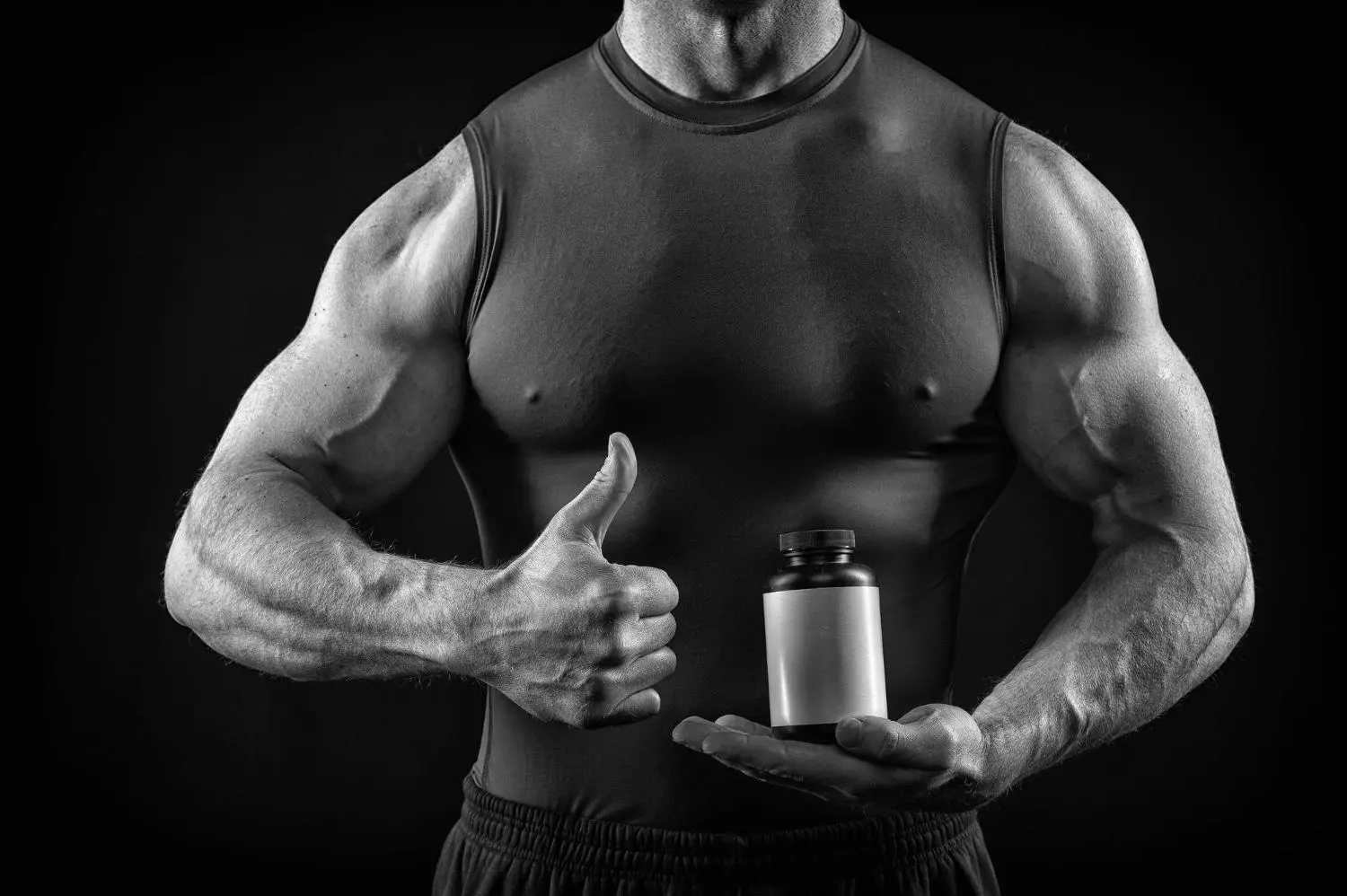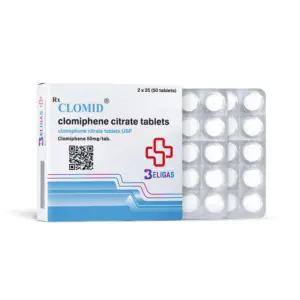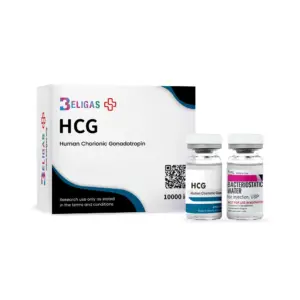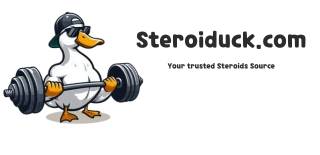PCT – Post Cycle Therapy for Bodybuilders: A Comprehensive Guide

Let’s be real—when bodybuilders wrap up a cycle of anabolic steroids, our natural hormone production takes a nosedive. Post-cycle therapy is advisable for bodybuilders to stimulate natural hormone production and restore hormonal balance after steroid use.
Skip PCT, and you’re looking at long recovery times, muscle loss, and honestly, some nasty health issues. Research shows that PCT use is associated with reduced withdrawal symptoms when men discontinue anabolic steroid use.
We get it—managing post-cycle recovery can feel like a maze, especially with hormones bouncing all over the place. Planning ahead, choosing the right meds, and actually understanding what our bodies are doing is non-negotiable if you want to come out strong on the other side.
Our guide digs into hormonal suppression, picking the right PCT meds, and laying out protocols that actually work. We’ll look at strategies for managing side effects and keeping your health in check for the long haul.
Key Takeaways
- PCT helps restore natural testosterone production and prevents prolonged hormonal suppression after steroid cycles
- Proper medication selection and protocol timing are essential for effective hormonal recovery
- Long-term health monitoring and recovery strategies reduce risks and optimize post-cycle outcomes
Understanding Post Cycle Therapy (PCT)
Post-cycle therapy means using specific meds to get your natural testosterone back up after a run with steroids. We need PCT because steroids mess with our hormonal system, and that can mean muscle loss and other stuff you just don’t want.
What Is Post Cycle Therapy for Bodybuilders?
PCT is the protocol we follow after finishing a steroid cycle, so our bodies can start making hormones again. Post-cycle therapy is advisable for bodybuilders to stimulate natural hormone production and restore hormonal balance.
During PCT, we usually take meds like selective estrogen receptor modulators (SERMs) or human chorionic gonadotropin (hCG). These help our bodies ramp up luteinizing hormone (LH) and follicle-stimulating hormone (FSH) production.
Common PCT medications include:
- Clomiphene citrate (Clomid)
- Tamoxifen (Nolvadex)
- Human chorionic gonadotropin (hCG)
- Enclomiphene
The goal? Kickstart the hypothalamic-pituitary-gonadal axis—that’s the system that controls natural testosterone in our bodies.
Why PCT Is Necessary After a Steroid Cycle
Anabolic steroids shut down our natural testosterone through negative feedback. When we pump in outside hormones, our bodies just stop making their own.
Skip PCT, and you might get stuck with hypogonadism—think muscle loss, low strength, and a bunch of health headaches.
Key reasons we need PCT:
- Hormone restoration: Helps restart natural testosterone production
- Muscle preservation: Prevents significant muscle loss during recovery
- Health protection: Reduces risk of long-term hormonal dysfunction
Research shows PCT use is associated with reduced withdrawal symptoms from anabolic-androgenic steroid use. Studies involving 470 men back this up.
Our LH and FSH levels stay in the gutter for weeks or even months if we don’t intervene. PCT gets things moving way faster.
Hormonal Suppression and Recovery
Anabolic steroids throw a wrench into your natural hormone production by suppressing the hypothalamic-pituitary-gonadal axis. That leads to low testosterone, testicular shrinkage, and a bunch of symptoms that can really mess with your head and body.
How Anabolic Steroids Affect Testosterone Levels
When we take anabolic steroids, our bodies see those synthetic hormones as testosterone. The hypothalamus reacts by dialing down gonadotropin-releasing hormone (GnRH).
This sets off a chain reaction. The pituitary gland then sends out less LH and FSH.
Natural testosterone production drops hard because the testes aren’t getting the signals they need. Some studies show testosterone can drop to just 10-15% of your normal levels during a cycle.
The depth of suppression depends on a few things:
- Cycle duration – longer cycles mean more suppression
- Dosage amounts – higher doses hit harder
- Compound selection – some steroids are just nastier than others
- Individual response – genetics play a role, whether we like it or not
We see that anabolic steroid use suppresses endogenous luteinizing hormone. Natural hormone production just doesn’t bounce back on its own.
Role of LH and FSH in Hormonal Balance
Luteinizing hormone is the main signal for testosterone production in the testes. If LH isn’t there, testosterone stays low—simple as that.
FSH works with LH to keep the testes healthy and sperm production going. During steroid use, both hormones basically flatline.
The pituitary gland shuts down production because it thinks there’s already plenty of hormones in the system.
Recovery means getting this feedback loop working again. We need to stimulate the pituitary so it starts pumping out LH and FSH, which then tell the testes to make testosterone.
The recovery timeline is all over the place for different people:
| Recovery Phase | Duration | LH/FSH Status |
|---|---|---|
| Initial suppression | 2-4 weeks | Minimal production |
| Early recovery | 4-8 weeks | Gradual increase |
| Full restoration | 3-6 months | Normal levels |
Some folks might not bounce back for a year or more if they don’t do anything about it.
Risks of Anabolic Steroid-Induced Hypogonadism
Steroid-induced hypogonadism is no joke—it brings more than just hormone imbalances. We see both physical and psychological symptoms that can seriously mess with daily life.
Physical symptoms like testicular atrophy pop up when the testes don’t get stimulation. Sometimes, this shrinkage sticks around if suppression drags on.
Low libido is super common during recovery, and erectile dysfunction often tags along. That can create relationship drama and psychological stress, honestly.
Fatigue hits hard when testosterone is low. Energy and motivation just aren’t the same without it.
Psychological effects show up as depression, anxiety, and mood swings. The research shows that PCT is associated with reduced withdrawal symptoms from anabolic steroid use.
Muscle gains you worked for can start slipping away if testosterone isn’t there to support them. Strength drops, and body fat can creep up.
Long-term risks? They’re not pretty:
- Permanent fertility issues
- Cardiovascular complications
- Bone density reduction
- Insulin resistance development
The suppression results in testicular atrophy and infertility if left untreated. That’s why acting fast really matters if you want to protect your reproductive health.
PCT Medications and Their Mechanisms
The main meds in post-cycle therapy work through different hormonal pathways to get natural testosterone back online. SERMs block estrogen receptors, while HCG tells the testes to start making testosterone again.
Overview of Selective Estrogen Receptor Modulators (SERMs)
SERMs are the backbone of most PCT protocols. These compounds bind to estrogen receptors in various tissues.
In the hypothalamus and pituitary, SERMs act as estrogen antagonists. That means they block estrogen from stopping the release of LH and FSH.
When estrogen can’t bind to those key receptors, the body thinks estrogen levels are low. The hypothalamus then ramps up gonadotropin-releasing hormone (GnRH).
More GnRH pushes the pituitary to release more LH and FSH. Those hormones head to the testes and tell them to get testosterone production going again.
Key SERM mechanisms include:
- Blocking estrogen receptors competitively
- Getting the hypothalamic-pituitary-gonadal axis working again
- Targeted tissue actions
- Boosting natural hormone signals
What’s cool is that SERMs can block estrogen in some places while acting like estrogen in others. That’s what makes them so useful for PCT.
Clomid (Clomiphene Citrate): Uses and Effects

Clomiphene citrate, or Clomid, is probably the most popular PCT medication among bodybuilders. This SERM is solid for getting natural testosterone back on track.
Clomid’s main moves:
- Blocks estrogen receptors in the hypothalamus
- Can ramp up LH and FSH by 200-300%
- Stimulates Leydig cells in the testes
- Helps the feedback loop reset
Most start with 50-100mg daily for the first two weeks, then drop to 25-50mg daily for weeks three and four.
What to expect:
- LH and FSH jump up in 3-5 days
- Testosterone usually starts climbing by week 2 or 3
- Natural hormone production picks up
- Testicular size and function can bounce back
Some people get visual issues or mood swings, especially at higher doses. Usually, dialing back the dose sorts that out.
Enclomiphene is a newer option—it might give you the same benefits as Clomid but with fewer side effects. Worth keeping an eye on, honestly.
Nolvadex (Tamoxifen Citrate): Benefits and Considerations

For bodybuilders who want a reliable SERM for PCT, tamoxifen citrate (Nolvadex) stands out. It blocks estrogen receptors differently than clomid, and the side effects aren’t quite the same either.
Nolvadex mechanisms include:
- High-affinity binding to estrogen receptors
- Potent hypothalamic and pituitary stimulation
- Long half-life, so once-daily dosing works
- Minimal visual side effects compared to clomid
Most standard protocols call for 40mg daily for the first two weeks, then 20mg for weeks 3-4. Some people stretch it to six weeks, depending on what they ran and how suppressed they feel.
Primary benefits of nolvadex PCT:
- Fewer mood swings than clomid
- Rarely causes vision problems
- Solid testosterone recovery rates
- Better for those who react poorly to other SERMs
Some guys do get mild nausea or hot flashes, but usually it’s less intense than with clomid. Honestly, plenty of experienced lifters pick nolvadex for longer PCTs because it just feels more predictable and easier to handle.
Role of HCG (Human Chorionic Gonadotropin) in PCT

HCG isn’t a SERM at all—it’s a hormone that acts like LH and kicks your testes into gear. That direct stimulation makes it a unique tool in the PCT toolbox.
HCG’s unique actions include:
- Direct stimulation of Leydig cells
- Immediate testosterone production
- Helps prevent testicular shrinkage
- Keeps intratesticular testosterone up
Most people use 500-1000 IU every other day for 2-3 weeks. Some even start HCG during their cycle, not just after.
HCG timing considerations:
- Start 3-5 days after your last injection
- Finish HCG before starting SERMs
- Leave 3-5 days between HCG and SERM
- Always consider compound half-lives
HCG ramps up testosterone fast, but it doesn’t restart your own LH. That’s why you still need a SERM after HCG gets things moving.
Potential HCG drawbacks:
- Temporary estrogen spikes
- Desensitization risk if overused
- Costs more than oral SERMs
- Requires injections
Structuring an Effective PCT Protocol
If you want to bounce back after a cycle, timing and drug choice matter—a lot. You need to know when to start, what to combine, and how your specific cycle changes the game.
Timing and Duration of Post Cycle Therapy
PCT timing depends on the half-life of what you ran. For short esters like propionate, you’re looking at 3-5 days post-injection before starting PCT.
Long esters like enanthate or cypionate? Wait 10-14 days before launching post cycle therapy. That lag lets hormone levels drop enough for PCT drugs to actually work.
Standard PCT Duration:
- 4-6 weeks for moderate cycles
- 6-8 weeks for longer or heavier cycles
- 8-12 weeks if you’re seriously suppressed
Prohormones usually need PCT right after the last dose since they clear fast. SARMs? Depends—some need just a day or two, others a bit longer.
Bloodwork at weeks 4 and 8 tells you if you’re recovering or need to tweak things. Testosterone, LH, and FSH levels are your main guides here.
Choosing and Combining PCT Drugs
Drug selection comes down to how suppressed you are and how the meds work. You’ve got three main categories that can work together to get your hormones back online.
Selective Estrogen Receptor Modulators (SERMs):
- Clomiphene citrate: 50-100mg daily
- Tamoxifen: 20-40mg daily
- Toremifene: 60-120mg daily
Aromatase Inhibitors:
- Anastrozole: 0.25-0.5mg every other day
- Exemestane: 12.5-25mg daily
Human Chorionic Gonadotropin (HCG):
- 500-1000 IU every other day for 2-3 weeks
SERMs really drive most PCTs—they block estrogen in the brain and push LH/FSH up, telling your testes to make testosterone again.
If you’re adding HCG to PCT, go easy—use it before or at the start, not for the whole run. This helps avoid desensitizing your receptors.
Adjusting Protocols for Different Cycles
PCT isn’t one-size-fits-all. You have to tweak it based on cycle length, the compounds, and your own recovery pattern. Heavier steroid cycles need stronger PCT than SARM-only runs.
Mild Cycles (8-12 weeks, moderate doses):
- Tamoxifen 20mg daily for 4 weeks
- Optional: Low-dose HCG for 2 weeks
Moderate Cycles (12-16 weeks, higher doses):
- Clomiphene 50mg + Tamoxifen 20mg daily for 6 weeks
- HCG 500 IU every other day for 3 weeks
Heavy Cycles (16+ weeks, multiple compounds):
- Clomiphene 100mg + Tamoxifen 40mg daily for 8 weeks
- HCG 1000 IU every other day for 3 weeks
- Anastrozole 0.25mg every other day
If you’re on TRT, you don’t usually need PCT—unless you’re coming off, in which case you might need a drawn-out plan (12-16 weeks isn’t unheard of).
SARM cycles are usually milder. Ostarine might only need four weeks of low-dose tamoxifen. Heavier SARMs like LGD-4033? Standard SERM protocols apply.
Bloodwork and side effects should drive your dose adjustments. Start higher if you need, then taper as your body starts making its own hormones again.
Managing and Preventing Side Effects
PCT isn’t just about hormone recovery—it’s about dodging side effects, too. Estrogen spikes, shrunken testes, and stressed livers all show up if you’re not careful. Let’s get into how to handle them.
Gynecomastia and Estrogen Management
Gynecomastia—the dreaded “gyno”—can sneak up during PCT as estrogen bounces around. If you notice sore or swollen breast tissue, don’t wait it out.
Tamoxifen is the go-to here. Most stick to 20-40mg daily for 4-6 weeks at the first sign of gyno.
Key Prevention Strategies:
- Watch for early breast sensitivity
- Start tamoxifen as soon as symptoms show
- Keep your dosing consistent
- Don’t suddenly stop your PCT meds
Jump on gyno symptoms early—it’s way easier to reverse if you catch it fast. Surgery is a last resort nobody wants.
Nolvadex can cause hot flashes, mood swings, or odd vision in some. Most find these manageable and worth it for keeping gyno at bay.
Countering Testicular Atrophy and Low Libido
Testicular shrinkage and a tanked sex drive are telltale signs your natural T is still lagging. There’s a path back, but patience helps.
Recovery Timeline Expectations:
- Week 1-2: Don’t expect much yet
- Week 3-4: Libido usually starts to return
- Week 5-8: Testicular size rebounds
- Week 8-12: Most guys feel “normal” again
HCG Integration: HCG at 500-1000 IU every other day (for 2-3 weeks before SERMs) helps jumpstart the testes. It’s not magic, but it can make a difference.
Clomiphene at 50mg daily gets LH and FSH moving. Pair that with good sleep, zinc, and stress management for best results.
Some studies suggest PCT can ease withdrawal when coming off steroids. Worth keeping in mind.
Liver Support and Overall Health During PCT
PCT meds can be rough on your liver. Supporting it isn’t optional—it’s necessary if you want to avoid long-term issues.
Essential Liver Support Supplements:
- NAC (N-Acetylcysteine): 600mg twice daily
- Milk Thistle: 200-400mg standardized extract
- TUDCA: 250-500mg daily if you want extra protection
Keep an eye on liver enzymes at the start and end of PCT. If your ALT/AST is up, don’t ignore it—sometimes you need to extend support or even back off certain meds.
Other Health Stuff: Cardiovascular health can shift during PCT, so omega-3s and blood pressure checks are smart.
Sleep can get weird during hormone crashes. Try to hit 7-9 hours a night, and don’t be afraid to use melatonin if you’re desperate.
Hydration matters, too. Your kidneys are working overtime with all the supplements—aim for at least 3-4 liters of water daily.
Post-Cycle Recovery Strategies and Long-Term Health
After PCT, the goal is to keep your gains and get your hormones stable again. There’s no magic bullet, but a few strategies help.
Maintaining Muscle Gains After PCT
Protein intake is more important than ever when your testosterone is still normalizing. Shoot for 1.2-1.6g per kg of bodyweight to keep muscle protein synthesis running.
Dial back your training volume—drop it 20-30% from on-cycle levels. Less is more while your body readjusts.
Key nutrients for muscle retention:
- Creatine monohydrate (3-5g daily)
- Leucine-rich foods or BCAA supplements
- Adequate carbs to refill glycogen
Sleep is a non-negotiable. You need 7-9 hours if you want to recover and keep growth hormone flowing.
Some evidence suggests PCT helps you hold onto progress if you match it with smart nutrition and realistic training tweaks.
Lifestyle Strategies for Hormonal Stability
Stress management matters a lot for testosterone recovery. If you let stress run wild, cortisol shoots up and testosterone tanks—pretty direct, honestly.
Effective stress reduction methods:
- Meditation or mindfulness practices
- Regular moderate cardio exercise
- Adequate social support systems
Dietary fat should make up about 25-30% of your calories. Both monounsaturated and saturated fats help your body actually make testosterone, so don’t shy away from them.
If you’re serious about recovery, keep alcohol low. It messes with your sleep and slashes testosterone. I’d say, don’t go over 2-3 drinks per week, if you can help it.
Vitamin D makes a difference, too. Most bodybuilders shoot for 2000-4000 IU daily, aiming for blood levels above 30 ng/mL to really support testosterone.
Transitioning to Natural Testosterone Production
That transition phase after PCT? You’re usually looking at 3-6 months. Testosterone levels bounce around a bit but should start trending up.
Monitoring markers include:
- Total testosterone
- Free testosterone
- Luteinizing hormone (LH)
- Follicle-stimulating hormone (FSH)
Don’t freak out if you feel weaker or more tired at first. The hypothalamic-pituitary-gonadal axis needs time to get back up to speed.
Some guys try natural boosters like D-aspartic acid or zinc. They might help a little, but honestly, patience is your best friend here.
Studies show PCT reduces withdrawal symptoms and supports long-term health outcomes when you do it right.
Recognizing and Addressing Ongoing Symptoms
Common post-PCT symptoms:
- Fatigue and low energy
- Mild depression or mood changes
- Decreased libido
- Sleep disturbances
If you’re still wiped out after 8-12 weeks, get some bloodwork done. Sometimes it’s more than just slow recovery, and you want to catch that early.
Depression can sneak up on you during this phase. Professional counseling isn’t a bad idea if you’re struggling as your neurotransmitters rebalance.
Red flags requiring medical attention:
- Severe depression or anxiety
- Complete loss of libido lasting >3 months
- Extreme fatigue affecting daily function
It’s smart to keep a daily log of your symptoms. Patterns start to show, and you can catch problems before they get out of hand.
Frequently Asked Questions
What are the best practices for Post Cycle Therapy to maintain muscle gains?
Keep your calories up during PCT if you want to hold onto muscle. Aim for at least 1-1.2 grams of protein per pound of bodyweight—don’t skimp.
Dial back your training intensity by 10-20%. Your natural testosterone is still coming back, so pushing as hard as you did on cycle isn’t realistic right now.
Post-cycle therapy helps restore hormonal balance and prevent health problems when you follow the right steps. Sleep and stress management become even more important during this stretch.
How long should an effective Post Cycle Therapy last?
Adjust the length based on what you used and how long you were on. Trenbolone or a cycle over 16 weeks? Expect a longer recovery period.
Bloodwork around week 4 tells you if you need to extend therapy. Testosterone should be climbing, but don’t expect it to hit your old baseline right away.
Some guys need up to 12 weeks for full recovery. Don’t rush it—cutting PCT short can backfire and set you up for rebound suppression.
What are the potential side effects of Post Cycle Therapy?
Clomid can cause weird visual stuff—blurred vision or light sensitivity. If that happens, lower the dose or switch it up.
Hot flashes and night sweats? Pretty common, but they usually fade after the first month.
Libido and erectile function can dip early in PCT. Most guys notice things improve as testosterone rebounds over the next month or two.
Can Post Cycle Therapy elevate natural testosterone levels?
Don’t expect PCT to push your testosterone above your natural baseline. The goal’s just to get you back to where you started.
Recovery takes anywhere from 4-12 weeks, depending on what you ran. Research shows PCT reduces withdrawal symptoms from anabolic steroid use when you stick to the plan.
Everyone’s baseline testosterone is different. Pre-cycle bloodwork gives you a target for what “normal” looks like for you.
What is the recommended dosage for Nolvadex and Clomid during PCT?
Nolvadex runs 20-40mg daily at first, then you can taper to 10-20mg for the rest of PCT.
A lot of bodybuilders combine both, but at lower doses—think Clomid 50mg and Nolvadex 20mg daily for four weeks.
Start low and see how you tolerate it. More isn’t always better, and higher doses can just mean more side effects without faster recovery.
Is Post Cycle Therapy necessary after every steroid or testosterone cycle?
Shorter cycles, say four weeks or less, might not demand a full-blown PCT protocol. Still, I’d keep an eye on your hormone levels with some blood work. Better safe than sorry, right?
Now, if you’re on testosterone replacement therapy for life, PCT doesn’t really make sense. You’re already relying on outside hormones, so restoring natural production isn’t the goal anymore.
HCG therapy has proven effective for bodybuilders with severe suppression from long, heavy cycles. Sometimes you just need that extra push when things get complicated.
